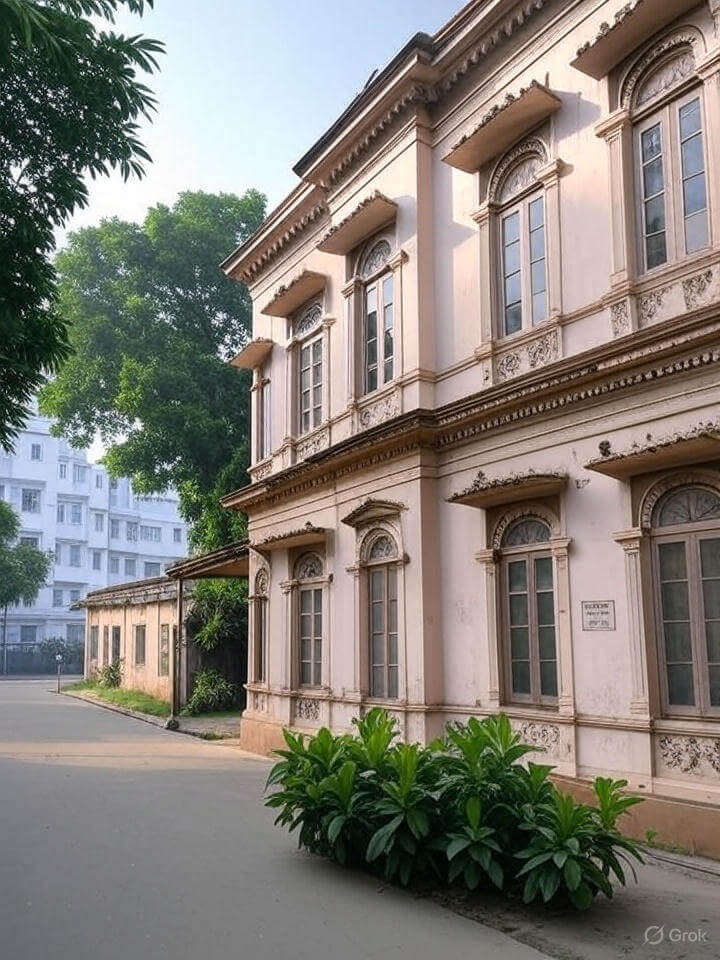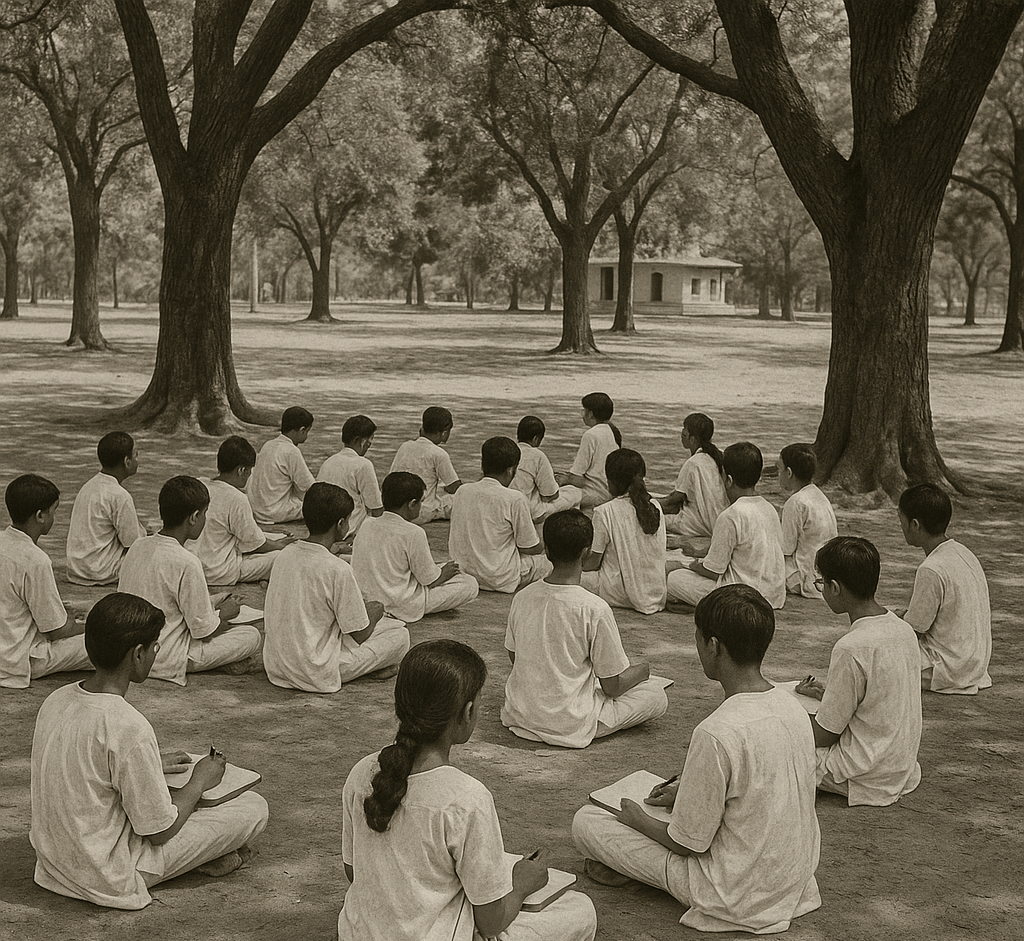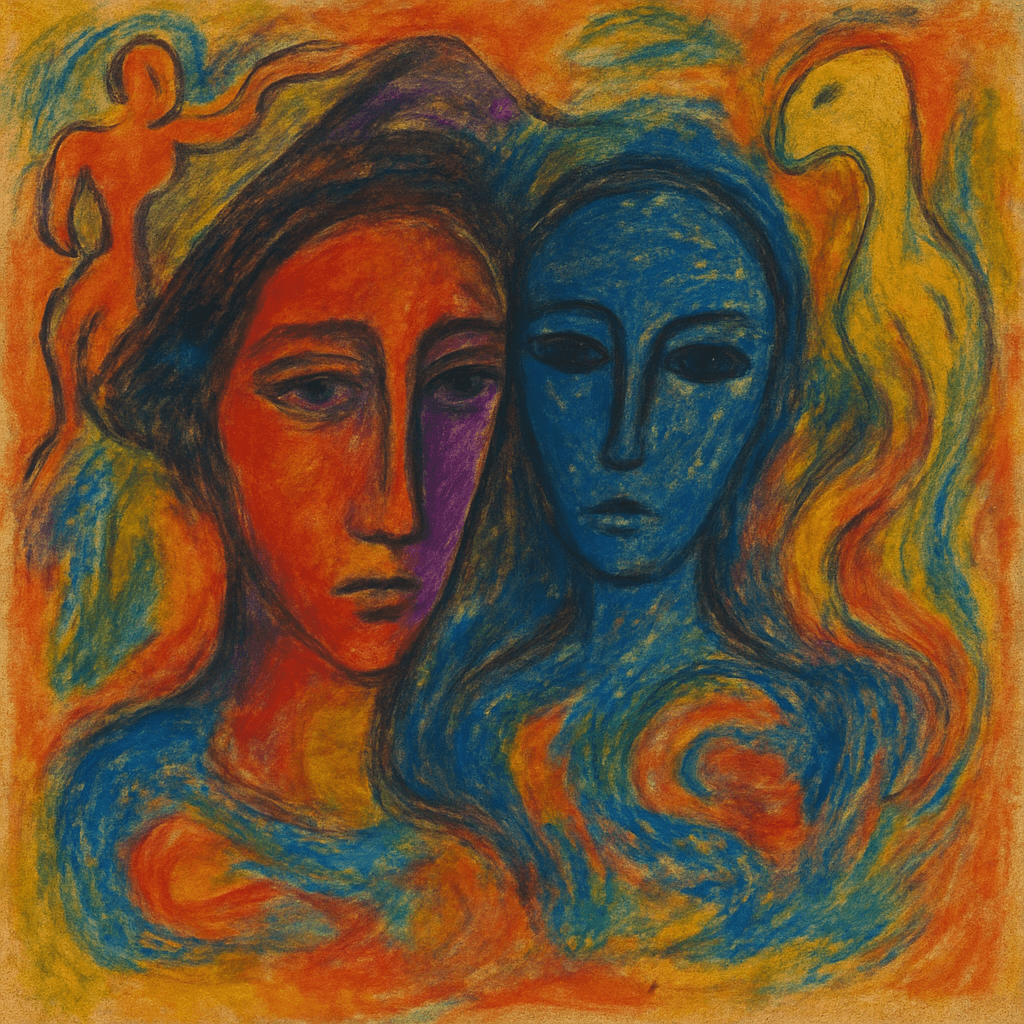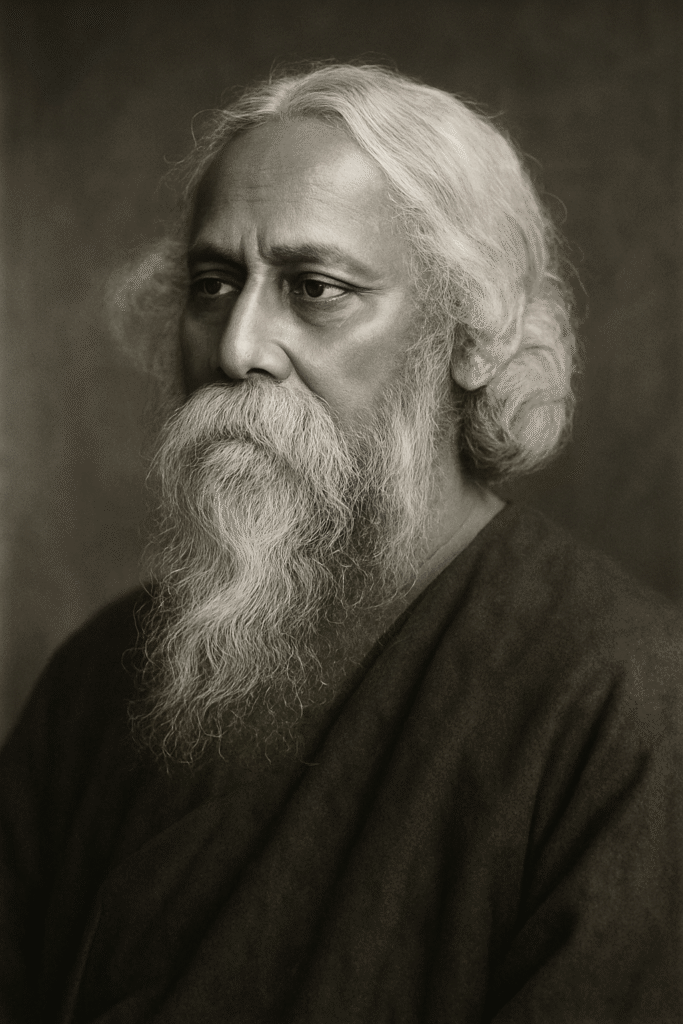Rabindranath Tagore: The Bard of Bengal Who Gave a Voice to India
Rabindranath Tagore was not just a person; he was an era unto himself. A poet, philosopher, musician, writer, and educator, his genius reshaped Bengali literature and music and left an indelible mark on the soul of India and the world. In 1913, he shattered a global barrier, becoming the first non-European to win the Nobel Prize in Literature for his profoundly spiritual collection of poems, Gitanjali. This is the story of the man they called Gurudev, a visionary whose legacy continues to inspire generations.
(Quick Facts Table):
| Full Name | Rabindranath Tagore (Thakur) |
| Known As | Gurudev, Kobiguru, The Bard of Bengal |
| Profession | Poet, Writer, Composer, Philosopher, Painter |
| Born | 7 May 1861, Jorasanko, Calcutta, Bengal Presidency, British India |
| Died | 7 August 1941 (aged 80), Jorasanko, Calcutta |
| Major Works | Gitanjali, Gora, Ghare-Baire, Jana Gana Mana |
| Spouse | Mrinalini Devi |
| Major Award | Nobel Prize in Literature (1913) |
Early Life and An Unconventional Education

Rabindranath Tagore was born on May 7, 1861, in the Jorasanko mansion in Calcutta, the youngest of thirteen surviving children. His father, Debendranath Tagore, was a leading figure in the Brahmo Samaj, and his family was at the forefront of the Bengal Renaissance.
Young Rabindranath detested formal schooling. He briefly attended several schools, including St. Xavier’s Collegiate School, but found the rigid classroom environment stifling. His real education took place at home, under the guidance of his elder brother Hemendranath. He learned a vast array of subjects, from Sanskrit and English literature to anatomy and gymnastics. His days were filled with exploration, swimming in the Ganges, and long treks, which instilled in him a lifelong love for nature.
At the age of eleven, after his sacred thread ceremony, he embarked on a tour of India with his father. This journey was a turning point. They visited the family estate at Shantiniketan and spent time in Amritsar, where he was deeply moved by the melodic gurbani at the Golden Temple. This experience sparked a deep curiosity about different cultures and faiths.
The Making of a Literary Genius
Tagore’s literary journey began at an astonishingly young age. He wrote his first poem at just eight years old. By sixteen, he was publishing major works under the pseudonym Bhanusimha (“Sun Lion”), including a collection of poems in the Maithili style.
His first published short story, “Bhikharini” (The Beggar Woman), marked a significant milestone, establishing a new genre in Bengali literature. His 1882 collection, Sandhya Sangeet (Evening Songs), contained the famous poem “Nirjharer Swapnabhanga” (The Fountain’s Awakening), a metaphor for his own creative awakening.
In 1878, he was sent to England to study law, but he returned to India without a degree, his passion for literature far outweighing his interest in jurisprudence. Upon his return, he produced a torrent of creative works, including poems, dramas, and essays, firmly establishing himself as a dominant voice in Bengali literature.
Shantiniketan and the Visva-Bharati Dream

In 1901, Tagore moved to a serene expanse of land in rural Bengal owned by his father: Shantiniketan (Abode of Peace). Here, he embarked on his most ambitious project. He founded an experimental school with just five students, envisioning an education free from the constraints of traditional classrooms. Classes were held outdoors, under the shade of massive banyan trees, fostering a deep connection between students and nature.
This school evolved into his life’s greatest legacy: Visva-Bharati University. It was founded on the principle that “the whole world can find a nest.” It aimed to be a center for global culture, blending the best of Eastern and Western learning and promoting a universal humanism that transcended all boundaries.
Gitanjali and the Nobel Prize

While at Shantiniketan, despite facing personal tragedies including the deaths of his wife and two children, Tagore continued his literary work. He wrote Gitanjali (Song Offerings), a collection of deeply spiritual and devotional poems.
During a trip to London in 1912, he translated some of these poems into English. He shared them with friends, including the famed Irish poet W. B. Yeats, who was mesmerized by their beauty and spiritual depth. The collection was published in English with a moving introduction by Yeats.
In 1913, the Swedish Academy awarded Rabindranath Tagore the Nobel Prize in Literature for this work, citing its “profoundly sensitive, fresh and beautiful verse.” He was the first non-European and the first lyricist to be so honored, bringing Indian literature to the global stage overnight.
A Voice of Conscience: Knighthood and Nationalism
In 1915, Tagore was awarded a knighthood by the British Crown. However, his conscience would not let him keep it for long. In 1919, following the horrific Jallianwala Bagh massacre where British troops killed hundreds of unarmed Indian protestors, Tagore renounced his knighthood in a powerful act of protest. In a letter to the Viceroy, he declared that “the time has come when badges of honour make our shame glaring in the incongruous context of humiliation.”
Tagore was a patriot who composed India’s national anthem, “Jana Gana Mana,” and inspired Bangladesh’s, “Amar Shonar Bangla.” However, he was a vocal critic of rigid, aggressive nationalism, which he saw as a threat to humanity. He championed an internationalist vision where different cultures could coexist and learn from one another.
The Final Years and Enduring Legacy
In his later years, around the age of sixty, Tagore took up painting. He created thousands of unique, haunting artworks that were exhibited across Europe and America.
He spent his final years at his beloved Jorasanko mansion, battling chronic pain and illness. He passed away on August 7, 1941. His death was mourned by millions, and his funeral procession drew a massive, emotional crowd through the streets of Calcutta.
Rabindranath Tagore’s legacy is immeasurable. His 2,230 songs, known as Rabindrasangeet, are the cultural heartbeat of Bengal. His novels, such as Gora and Ghare-Baire (The Home and the World), explore complex social and political issues. His poems, especially the immortal line “Where the mind is without fear and the head is held high,” continue to resonate as a prayer for freedom and human dignity. He was, and remains, a true Visva-Kavi—a poet for the world.

Frequently Asked Questions (FAQ) about Rabindranath Tagore
(H3 Heading): Why did Rabindranath Tagore receive the Nobel Prize?
Rabindranath Tagore was awarded the Nobel Prize in Literature in 1913 primarily for his English translation of his Bengali poetry collection, “Gitanjali.” The Nobel Committee recognized the work for its “profoundly sensitive, fresh and beautiful verse” that conveyed spiritual depth and universal human emotions.
What is Shantiniketan?
Shantiniketan is a university town in West Bengal, India, founded by Rabindranath Tagore. It started as a small experimental school and later grew into Visva-Bharati University, a unique institution designed to blend Eastern and Western educational philosophies and foster a global cultural understanding.
Did Rabindranath Tagore write the national anthems for two countries?
Yes. He wrote and composed “Jana Gana Mana,” which was adopted as the national anthem of India. He also wrote “Amar Shonar Bangla,” which was adopted as the national anthem of Bangladesh, making him the only person to have written the anthems for two different countries.
Why did Tagore renounce his knighthood?
Tagore renounced his knighthood in 1919 as a protest against the brutal Jallianwala Bagh massacre in Amritsar. He felt he could not hold a British title of honor when the same government was responsible for such a horrific act against his countrymen.
